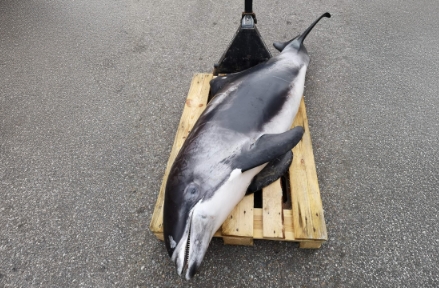In close contact with the ocean
Dissection of three white-beaked dolphins
On Thursday, 18 September, we have an extra exciting activity on the programme when we welcome a group of skilled professionals who will dissect three white-beaked dolphins – and you can watch!
Take a front-row seat as we step into the fascinating world of biology and get under the skin of the white-beaked dolphin.
There are three white-beaked dolphins in total – two fully grown females and one foetus. The purpose of the dissections is to collect data about the animals so that we can learn even more about the species, and of course we hope to be able to determine the cause of death.
We will provide ongoing updates about our findings during the dissection, and there will be ample opportunity to ask questions throughout.
Please note: The dissections will take place outdoors, so remember to wear appropriate clothing.
White-beaked dolphin (Lagenorhynchus albirostris)
The white-beaked dolphin is a large dolphin that typically grows to around 2.5 metres in length.
It is the largest breeding predator in Denmark and one of the most common whales in Danish waters.


